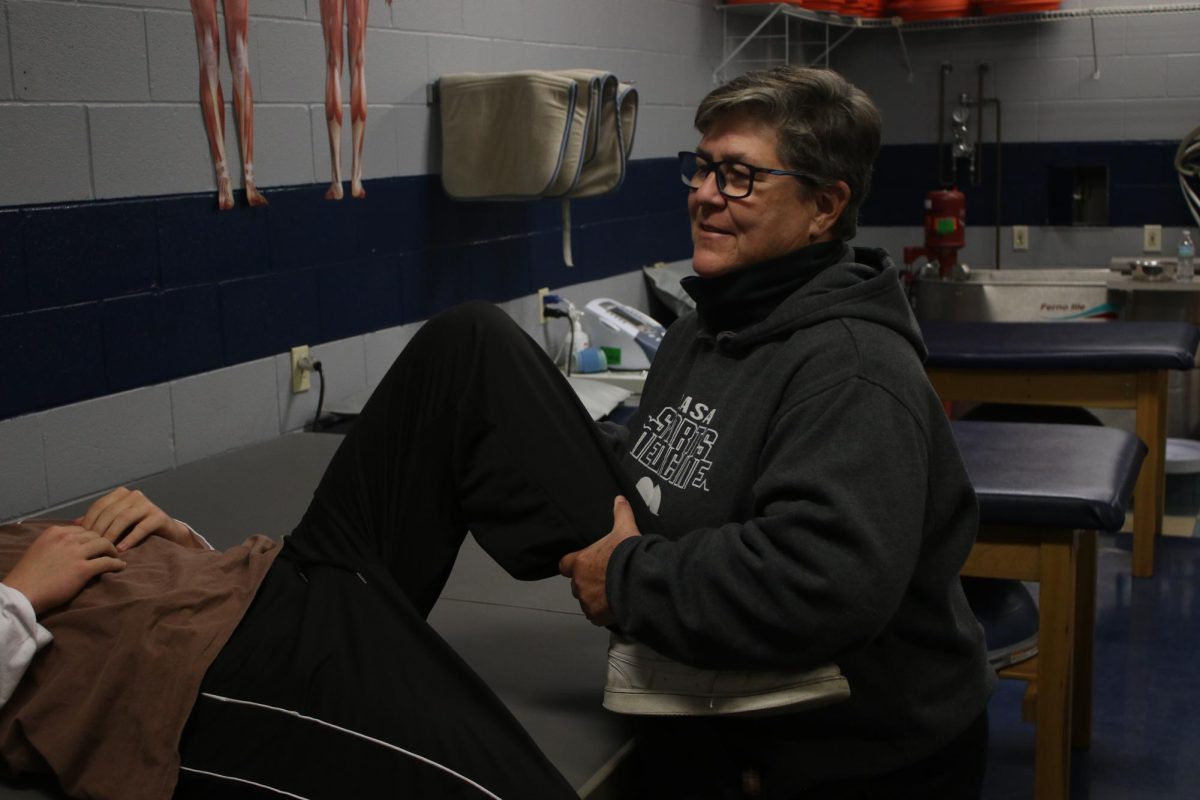MaxPreps, part of CBS Sports and the largest database for high school sports in the U.S., attempts to cover every player, every school, and every game. According to the National Federation of State High School Association, with over 8 million students participating in high school sports, MaxPreps has turned to innovative new technologies such as artificial intelligence (AI) to keep up with the growth of high school athletics.
MaxPreps covers most LASA sports, and earlier this year, MaxPreps published an article in which they wrote that LASA had “‘taken an ‘L’’’. MaxPreps’ Director of Programming and Outreach Steve Montoya takes responsibility for being the public face of the brand. Working there for 18 years, Montoya has watched it grow into the sixth most visited sports site in the U.S.
“MaxPreps originated because coaches and schools were reporting their schools in traditional ways like on the end of a newspaper and MaxPreps came in and created a digital platform, where interested fans could find information about programs,” Montoya said. “But since then, we expanded a lot more from that.”
According to Montoya, the largest thing driving MaxPreps’ expansion is their successful partnerships. This includes the 97 other databases and networks they have absorbed, such as the Texas Coaches Association, one of their top collaborators. Montoya explained that through working with other leagues like Texas’ University Interscholastic League (UIL), MaxPreps can get information on virtually every single competitive high school game played.
“In addition to a data engine, we’ve become a media outlet,” Montoya said. “We now have our writers that will then do their own research and compile stats and watch videos and go to games to actually create our national ranking.”
Montoya explained that because there are 27,000 high schools in the U.S., each having between 10-20 teams, there are around 400,000 teams MaxPreps needs to cover. To accommodate this challenge, MaxPreps has established a partnership with infoSentience, an AI company that generates articles for their website to cover games almost immediately after they happen.
“There is no way, literally no way, for anyone to cover every team and every player,” Montoya said. “So at the end of the day, AI allows us to reward more coaches and players, because once any data is entered, we have it create automated articles.”
However, there are concerns about MaxPreps’ security and accuracy when it comes to its use of AI. Freshman Thomas Treurniet, a strong safety and center back for the LASA football team, in particular, wishes that MaxPreps took steps to verify accounts so that information was accurate.
“There’s a lot of problems,” Treurniet said. “Anyone can create an account, so anyone can record scores at a game. They could be people who have no connection, who maybe aren’t even at the game.”
MaxPreps also includes individual accounts for student athletes, which can be claimed and then edited. With his account, Treurniet has had problems with people attempting to steal accounts. While he acknowledges that it’s a great tool for outreach and recruiting, he hopes that MaxPreps will take certain steps to be more reliable.
“I remember one of our games previously this season, where MaxPreps provided inaccurate stats, and it was very confusing for us,” Treurniet said. “We started watching film, and trying to figure out the results. I think that there should be a verification process, including ID, age and verifying that your location is at the game before you should be able to record scores.”
Sophomore Parker Hill, who is the quarterback and defensive end on the LASA football team, still believes that, regardless of its flaws, MaxPreps’ work is nonetheless appreciated by many athletes. For Hill, MaxPreps can be a tool that can help smaller programs receive opportunities that would otherwise be reserved for other, more established high school athletics teams, and he didn’t mind the article reporting their struggles.
“I think it was really well written,” Hill said. “It seemed accurate to the situation we were in. It means that schools that don’t get as much attention are going to get the equal opportunities as bigger schools.”
However, Hill believes that most people use MaxPreps for player statistics, and focusing on those statistics can be misleading. According to Hill, this makes it so that a handful of athletes can bring down and misrepresent the team in statistics and make players seem worse than they actually are.
“Certain positions are dependent on the rest of the team,” Hill said. “Linebackers can’t make plays without the defensive line, quarterbacks can’t make plays without wide receivers, and wide receivers can’t make plays without the ball passed to them.”
Although Treurniet and Hill worry about the problems MaxPreps could create, Montoya believes that by forming partnerships and using AI, MaxPreps has become a cornerstone of high school sports reporting, with articles on every game. MaxPreps is still expanding and reaching new goals, and according to Montoya, to support the students and coaches.
“There’s no better sports, in our opinion, than the hard working high schoolers and all those who make what they do possible.” Montoya said.







